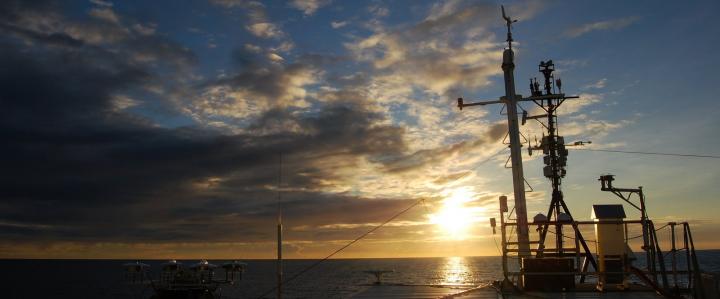Research Overview
Aerosol particles can impact climate directly by absorbing or scattering incoming solar radiation and indirectly by affecting cloud properties such as extent, lifetime, and albedo. These same particles, which are emitted directly from combustion or other industrial processes or formed from gas phase species, affect air quality.
The Atmospheric Chemistry Group (ACG) at PMEL has led and participated in research cruises for over 30 years to map the spatial and temporal distributions of natural and anthropogenic aerosol particles in remote marine regions as well as downwind of continental sources. In addition, ACG has measured the chemical composition of aerosol particles at several northern hemisphere monitoring sites beginning in 1992. More recently, ACG has measured aerosol properties on Svalbard, Norway using unmanned aerial systems (UASs).
The data that are collected are used to investigate the formation and transformation of aerosol particles in the atmosphere, to determine relationships between sources and optical and cloud nucleating properties of aerosols, and, ultimately, to determine the impact of aerosols on regional climate and air quality.
Atmospheric Chemistry Group Research Summaries



